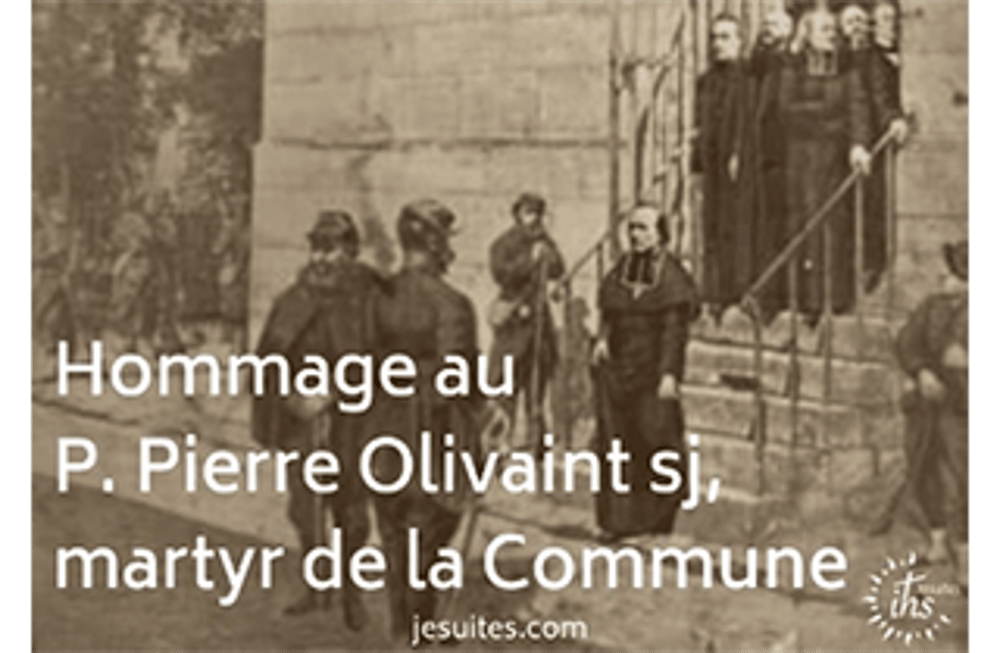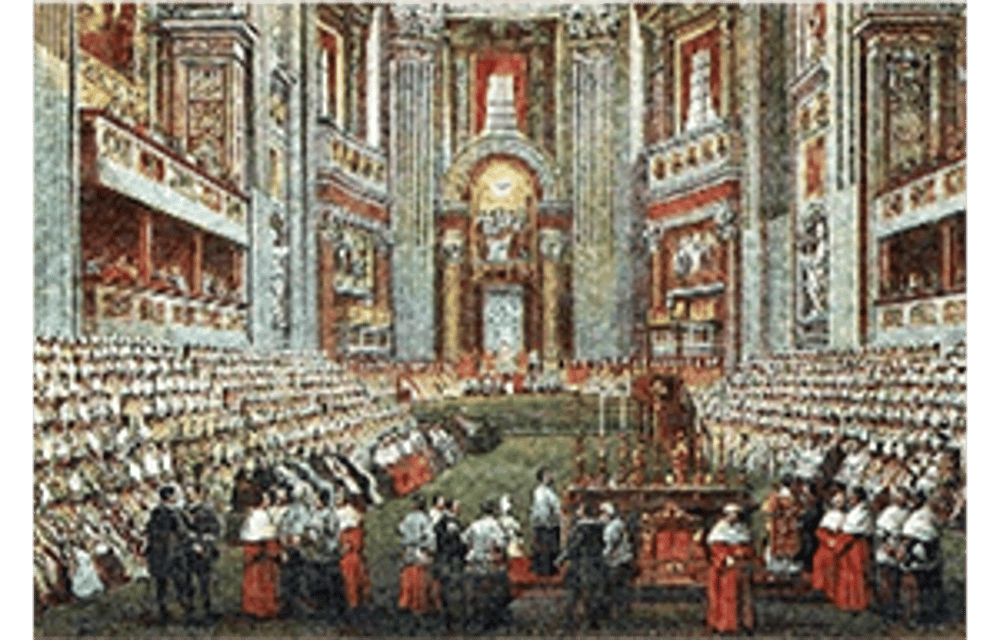
SMR History, 1867-1873 Part I
1867-1873: Emilie and SMR in France, Belgium, and Rome
These were the years when war decimated Europe. Communication was almost impossible. Several SMR communities had to disperse; in Paris only the superior and two sisters stayed in each house. Emilie wrote: “500,000 men, Prussians as well as French, were left on the field of battle.”
From 1867 Emilie entered a “third week” during which God seemed to hide from her in what were important times in the development of the Congregation. The Constitutions were approved by Rome in September 1869. Canonical approval was made official on October 1st.


At the same time, Europe was torn apart by war which was declared on July 15, 1870. As often happens, horror takes many by surprise. On September 1st Emilie wrote to her daughter: “The news is not cheerful. It is now reported that MacMahon is beaten – what a disaster! All France is devastated! The splendid library of Strasbourg is burned to the ground; not a single volume has escaped. The main street is destroyed and in other streets, debris is everywhere. The new church and the Lyceum are destroyed from top to bottom; the roof is off in the Cathedral. Sixty thousand Prussians are under its walls and hardly any garrison in it. Trains are no longer running from Paris to Belgium and that, it is said, has been the case for some days and may continue for a very long time.”
Strasbourg was surrounded from August 14 until September 27. The SMR community was still at Rue Ste. Elizabeth where fighting in the streets was so intense that they had to take refuge in the cellar. The superior of Strasbourg wrote to Emilie asking for instructions in case they were asked to provide a field hospital for wounded soldiers. Emilie gave her approval and offered encouragement. Beginning on August 26th seventeen officers and several soldiers were nursed there. They had set up a first aid station where the first wounded soldiers arrived on the 26th of August. Many more injured would follow. On the 27th of September, the city surrendered to the invaders. Mayor Rousseau talked with the superior to explain that the soldiers housed there would have to surrender. The last officers left our house on the 17th of October to surrender to Germany. In October, Emilie spent a few weeks in Strasbourg where she had to disperse the entire community by sending the sisters to Belgium. Emilie wrote a letter to all the communities about the situation in Strasbourg, Rome, and Paris.
One of the saddest things was that during the war, Father Olivaint, S.J, friend and supporter of the congregation from its beginning, was executed on the 26th of May.
The communities of Toulouse and Belgium received sisters from Paris, Strasbourg, and Rome. The sisters in Strasbourg had to leave for a while because the house had to be repaired. They had very little income and everything was expensive. Our sisters did whatever they could to earn some money. Those who went to Fribourg Switzerland, remained until May 1871. After the Armistice of January 21, 1871, Emilie was able to send a few sisters back to Strasbourg. Soon after their return, Marie de Ste. Jean, Marie de St. Rodolphe, and Marie de St. Hilaire were again tending to the wounded soldiers.

At the end of the war, as often happens, there was a resurgence of faith. Between January 1871 and 1872, three new houses opened in France: Nantes, Le Mans, and Liesse.

Rome and Brussels
In 1869 the community of Rome moved from Borgo Santo Spirito to San Isidoro (later Via deli Artistic) where it remained until January 6, 1896, when the Generalate was moved to Via dei Lucchesi. These were years of turmoil throughout Europe. The First Vatican Council began on December 8th, 1869. During the Council four Bishops were given accommodations in the retreat house.
From February 6 to April 12, 1871, Emilie was in Rome to present the Constitution and Rules to the Sacred Congregation.
When Emilie was told that her daughter was dying, she traveled from Rome to Brussels without stopping. She found Pia, M. of St. Victor, alive but in great pain, hardly able to get out of bed, she spent her days seated in a little straw armchair where she grew increasingly feeble. She died the 14 of December at 9 pm. Emilie spent a long time next to her daughter’s body in deep sorrow and tears but then had to get ready to receive the family.
In March 1873 Emilie returned to Rome.
It was during this period of tremendous suffering that she felt abandoned by Fr. Ginhac who did not understand her anymore. Emilie wrote in her journal: “With the indifference to pain that takes life just as it is, sure that not a ray of joy lay ahead, I told myself: I am alone, I have no one. OK! Suffering will shorten my life, that is my only hope. I thought about this with a sort of stoicism; I will have to suffer always, that was it. I had nothing else but to accept it.”
In 1879 the Italian government annexed the Pontifical States to Italy, designating Rome as Capital of the kingdom.
The Impact of War on France
On July 19, 1870, Napoleon III declared war against Germany. It was a disaster for France. The French army suffered great losses in August 1870.
The war ended with an armistice signed on January 28, 1871. Alsace and part of Lorraine were annexed to Germany.
Concepción González Cánovas, smr
conce_gonzalez@comcast.net
Sources:
The Life of Mother Mary of Jesus. Emilia d’Oultremont Baroness d’Hooghvorst, 1818-1878; Peter Suau, SJ. 1913.
Présentation Historique de la Société de Marie Réparatrice (1818-1953). Henri de Gensac, SJ. Rome, 1992.
Images used with permission
